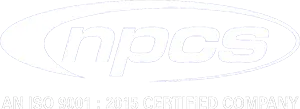Information
Chemical industry in India
INTRODUCTION
Chemical industry is one of the oldest industries in India.
It not only plays a crucial role in meeting the daily needs of the common man,
but also contributes significantly towards industrial and economic growth of the
nation. The industry, including petro-chemicals, and alcohol-based chemicals,
has grown at a pace outperforming the overall growth of the industry.
2. The global chemical market is estimated at approximately
USD 1.7 trillion. Western Europe is the largest chemical-producing region
followed by North America and Asia.
3. The Indian Chemical Industry ranks 12th by volume in the
world production of chemicals. The industry’s current turnover is about USD
30.8 billion which is 14% of the total manufacturing output of the country. The
export of chemicals in the year 2002 was USD 5.875 billion, which forms almost
0.9 % of the world export of chemical products and about 13% of the country’s
total export. Substantial proportion of these exports goes to the USA, Europe
and other developed nations. Its contribution to the national revenue by way of
custom and excise duties is about 20%. India is strong in basic chemicals that
go into production of consumer items like paints, dyes, soaps, medicines,
toiletries, cosmetics, etc.
4. The Indian Chemicals Industry comprises both small and
large scale units. The fiscal concessions granted to small sector in
mid-eighties led to establishment of large number of units in the Small Scale
Industry (SSI) sector. Currently, the Indian Chemical Industry is in the midst
of major restructuring and consolidation phase. With the shift in emphasis on
product innovation, brand building and environmental friendliness, this industry
is increasingly moving towards greater customer-orientation. Even though India
enjoys an abundant supply of basic raw materials, it will have to build upon
technical services and marketing capabilities to face global competition and
increase its share of exports.
5. In terms of consumption, the chemical industry is its
own largest customer and accounts for approximately 33 per cent of the
consumption. In most cases, basic chemicals undergo several processing stages to
be converted into downstream chemicals. These in turn are used for industrial
applications, agriculture, or directly for consumer markets. Industrial and
agricultural uses of chemicals include auxiliary materials such as adhesives,
unprocessed plastics, dyes and fertilizers, while uses within the consumer
sector include pharmaceuticals, cosmetics, household products, paints, etc.
6. India also produces a large number of fine and
speciality chemicals, which have very specific uses and are essential for
increasing industrial production. These find wide usage as food additives,
pigments, polymer additives, anti-oxidants in the rubber industry, etc. Some of
the important manufacturers of speciality chemicals include NOCIL, Bayer
(India), ICI (India), Hico Products and Colourchem.
7. The Dyestuff sector is one of the important segments of
the chemicals industry in India, having forward and backward linkages with a
variety of sectors like textiles, leather, paper, plastics, printing ink and
foodstuffs. The textile industry accounts for the largest consumption of
dyestuffs at nearly 80%. From being importers and distributors in the 1950’s,
it has now emerged as a very strong industry and a major foreign exchange
earner. India has emerged as a global supplier of dyestuff and dyes
intermediates, particularly for reactive, acid, vat and direct dyes. As for a
global production of dyes is concerned, India accounts for 6% of the world
production.
8. Chemical fertilizers and pesticides played an important
role in the "Green Revolution" during the 1960s and 1970s. The
consumption of pesticides in India is low in comparison to other countries.
Indian exports of agrochemicals have shown an impressive growth over the last
five years.
The key export destination markets are USA, UK, France,
Netherlands, Belgium, Spain, South Africa, Bangladesh, Malaysia and Singapore.
9. The Government is promoting research on the use of
alternative and unharmful pesticides using neem seeds. A country programme
entitled "Development and Production of Neem Products as Environment
Friendly Pesticides" is being undertaken by the Department of Chemicals
& Petrochemicals with the financial assistance of United Nations Development
Programme (UNDP)/ United Nations Industrial Development Organization (UNIDO).
The project is being implemented at two locations viz., Nimpith in West Bengal
and Nagpur in Maharashtra to promote production, processing and use of neem-based
products, thereby aiding wasteland development, generating rural employment and
providing farmers with eco-friendly/bio-degradable pesticides.
10. Production performance of some of the important chemicals including pesticides and dyestuffs are given below:
|
Item |
Installed Capacity 31.3.2003 |
P R O D U C T I O N |
||
|
|
|
2002-03 |
2003-04(Estimated) |
2004-05(Anticipated) |
|
Soda Ash |
2042 |
1632 |
1673 |
1840 |
|
Caustic Soda |
1953 |
1520 |
1552 |
1707 |
|
Liquid Chlorine |
1448 |
970 |
1012 |
1113 |
|
Calcium Carbide |
86.50 |
49.00 |
45 |
50 |
|
Phenol |
66.5 |
76.20 |
72 |
79 |
|
Methanol |
385.00 |
362.10 |
366 |
403 |
|
Tech. Pesticides |
144.95 |
68.17 |
68 |
75 |
|
Dyestuffs |
52.70 |
25.90 |
27 |
29 |
Industrial
Policy
LICENSING POLICY
A. The New Industrial Policy exempts all industrial
undertakings from licensing requirements, subject to the following conditions.
·
·
List of items which are subject to compulsory licensing;
·
List of items reserved for small-scale sector.
B.
Phosgene and its
derivatives.
Isocyanate and di-isocyanates of hydrocarbon not elsewhere specified.
FDI
Policy
Foreign
Direct Investment (FDI) Policy:
The
procedure has been simplified for facilitating foreign direct investment. Most
of the chemical items fall under the RBI automatic approval route for FDI/NRI/OCB
investment up to 100% except the following:
·
Activities / items
that require an industrial license
·
Proposals in which the
foreign collaborator has previous / existing venture/tie up in India in the same
or allied field.
·
All proposals relating
to acquisition of shares in an existing Indian company by a foreign/NRI
investor.
·
All proposals falling
outside notified sectoral policy/caps or under sectors in which FDI is not
permitted.
For other industries, Government approval is accorded through Foreign
Investment Promotion Board (FIPB).
Details
regarding Industrial Licensing and Foreign Direct Investment can be obtained at
the website of Department of Industrial Policy and Promotion (http://dipp.nic.in)
Exim
Policy
A)
Export
Promotion Capital Goods (EPCG) Schemes wherein Capital Goods (CG) can be imported at
5% Customs Duty subject to an export obligation equivalent to 8 times of duty
saved on CG imported to be fulfilled over a period of 8 years.
B)
Export
Oriented units: -
Units undertaking to export their production of goods may set up units under
Export Oriented Units (EOUs) Scheme. These units can sell products manufactured
by them including scrap/waste/remnants arising out of production within the
overall ceiling of 50% of FOB value of export in the Domestic Tariff Area(DTA)
on payment of applicable duties. These units can import without payment of duty
all types of goods, including capital goods, required for its activities as
prescribed in the EXIM Policy. EOU unit shall be a positive Net Foreign Exchange
Earner. Only projects having a minimum investment of Rs.1
crore in the plant and machinery shall
be considered for establishment as EOUs under the scheme.
Special
Economic Zones:
- SEZ is specifically delineated duty free enclave and shall be deemed to be
foreign territory for the purposes of trade operations and duties and tariffs.
Goods going into the SEZ area from DTA shall be treated as exports and goods
coming from the SEZ area into DTA shall be treated as if these are being
imported. SEZ units may sell goods, including by-products, in DTA in accordance
with the import policy in force, on payment of applicable duty.
C)
Duty
Exemption schemes enables duty free import of inputs which are physically
incorporated in the export product and required for export production. Under
this scheme, the exporters can take the advance license on self declaration
scheme under Para 4.7 of Hand Book of procedures where Standard Input Output
Norms (SION) do not exit in the EXIM Policy. The import of fuel is also allowed
upto 4% of the fob value of export in case of Dyes & Dye intermediate &
organic chemicals, upto 5% of fob value of exports of Pesticides (Technical)/
Pesticides formulation from basic stage and upto 3% of FOB value of exports of
Inorganic Chemicals for neutralization of high fuel cost for export purposes
Details
regarding EXIM Policy can be obtained at DGFT website http://dgft.delhi.nic.in/
DEPB/Draw Back rates
DEPB/draw back rates may also be availed by
the exporter as an alternate to advance license scheme. The objective of Duty
Entitlement Pass book Scheme is to neutralize the incidence of basic customs
duty and surcharge thereof on the import content of the export product. The duty
credit under the scheme is calculated by considering the import content and
value addition as per standard input/output norms.
Project
Import
Under
Chapter 98.01 of Customs Tariff Act, imports of capital goods are permitted at
the rate of duty of 20%. The objective of the scheme is to encourage initial
setting of a unit or substantial expansion of the existing unit.
The
provisions to permit import of CG is given below:
"All
items of machinery including prime movers, instruments, apparatus and
appliances, control gear and transmission equipment, auxiliary equipment
(including those required for research and development purposes, testing and
quality control), as well as all components (whether finished or not) or
raw-materials for the manufacture of the aforesaid items and their components, required for the initial setting
up of a unit, or the substantial expansion of an existing unit, of a specified
"Industrial Plant".
Spare
parts, raw materials or consumable stores which are essential for the
maintenance of the
plant are allowed up to 10% of the CIF value of the equipments".
PERSPECTIVE PLANNING
The Working Group constituted by Dept. of
Chemicals & Petrochemicals have estimated demand of various chemicals by
2000 AD which is as under :
|
Chemical Products |
Demand
by |
|
1.
Dyestuffs |
65.3 |
|
2.
Caustic Soda |
1400.0 |
|
3.
Soda Ash |
2680.0 |
|
4.
Calcium carbide |
165.0 |
|
5.
Aluminium Fluoride |
150.0 |
|
6.
Synthetic Cryolite |
50.0 |
|
7.
Calcium carbonate |
241.0 |
|
8.
Potassium Chlorate |
23.0 |
|
9.
Sodium Nitrate |
27.0 |
|
10.
Carbon Black |
239.0 |
|
11.
Titanium Dioxide |
16.0 |
|
12.
Acetaldehyde |
378.0 |
|
13.
Acetic Acid |
322.0 |
|
14.
Acetic Anhydride |
60.0 |
|
15.
Acetone |
65.0 |
|
16.
Ethyl Alcohol |
24.0 |
|
17.
Aniline |
39.0 |
|
18.
Chloro Methane |
45.0 |
|
19.
Citric Acid |
26.0 |
|
20.
MDI |
15.0 |
|
21.
Formaldehyde |
480.0 |
|
22.
Methanol |
518.0 |
|
23.
Nitro Benzene |
85.5 |
|
24.
Phenol |
105.0 |
|
25.
Phthalate Plasticizers |
1 |
X
Have a business idea? Let’s make it
happen together-contact us now!




